![]()
Tuesday, May 26, 2015 | By Rob Harris
Ireland’s principle broadcasting institution, RTE, ran a series of news reports by journalist Robert Shortt, which are concerned with the current troubles that the people of Gaza face, in the aftermath of ‘Operation Protective Edge’, last year’s war between Israel and several terrorist groups based in Gaza.
Shortt’s reportage echoes many of the recent accounts of the situation in Gaza found in the mainstream media. His reports form the basis of this article’s broader thematic rebuttal of current media coverage.
The most substantive report, ‘Inside Gaza’, was broadcast on ‘Prime Time’, RTE’s premium current affairs programme, on May 7th 2015 (RTE incorrectly posts the date as May 8th). The segment begins at 9:57 in RTE’s Internet Player.
An article, titled ‘RTE’s Gaza news coverage sponsored by Irish Aid’s pro-Palestinian proxy’ details possible breaches of broadcasting code in Shortt’s reports.
The report is introduced by David McCullagh, who accepted United Nations “estimates” of the civilian death toll, without mention of their true source — Hamas, which often used distorted figures for propaganda in the past.
“Last year Hamas and Israel fought a 50 day war in the Gaza strip. It was the third conflict in six years and the deadliest. The UN estimates that on the Israeli side 67 soldiers and four civilians were killed. On the Palestinian side, over 2,200 people were killed, including over 1,500 civilians, of whom 551 were children. Now many are warning that tensions are rising once again.”
On the UN report: ‘attacking’ schools?
Shortt’s 11 and a half minute report highlights the suffering of children during and after the 2014 conflict. For example, he stated:
“Last July, Mara, her ten siblings, father, and mother, then heavily pregnant, fled the bombing of their home to find shelter in this UN school. Over a thousand people are still crammed into the classrooms of Zeitoun Elementary. Seven such centres were attacked by Israeli forces during the war causing 44 deaths, and 227 injuries.”
Shortt’s claim relates to the damage of seven schools studied in a UN Board of Inquiry report — its summary findings were issued on the 27th April. Shortt’s claim that Israel “attacked” seven UN schools is not credible. The report notes that one school (appertaining to ‘Incident (g)’ in the study) was not being used as a shelter, and the road outside another school (‘Incident (f)’) was struck, rather than the school itself. Moreover, the word ‘attack’ suggests an overt intentional wish to strike these UN civilian installations, which the UN report, although prejudicial in its own right, does not itself ascribe to Israeli actions.
Despite the specificity of the report, Shortt failed to properly identify the school in question. It may be an ‘United Nations Relief and Works Agency for Palestine Refugees in the Near East’ (UNRWA) school in Zeitoun (also spelt Zaitoun), called the ‘Shahada Al-Manar Elementary’, a site from which Hamas was identified to have fired weaponry, or ‘Zeitoun Preparatory Girls “B” School’. The UN report blames the IDF for a stray “projectile” striking the roof of the latter school, whilst stating that “militant activity was also noted” (Point D, 35) some hours earlier in the area, and that no IDF activity can be explicitly tied to the single strike. Therefore, to describe the school as having been “attacked” is misleading.
Shortt’s subsequent news report, discussed below, appears to reference the same building visually, but a sign identifies it as “Zaitoun Elementary Boys “B” School”, which was not one of the schools featured in the UN report, albeit related to the girls school of the same name. Shortt further remarks:
“Last week the UN dismissed Israeli claims that Hamas rockets were found in schools used as shelters but it admitted rockets were found in empty schools.”
Israel did not claim rockets had been found in schools actively used as shelters. Broad Israeli claims related to the use of active school shelters by terrorist groups, to launch attacks. Such claims were latterly disputed by witness testimony in the report but the conditions of such testimony can be deemed problematic with some justification, given potential conflicts of interest with the parties collecting it. Moreover, the word ‘dismissal’ is an undue and misleading description of the UN report’s findings. The UN report looked specifically at a small number of instances, namely those that involved UNRWA property (see Point 5 of the report), rather than provide an actual overview of the conflict:
“In its report, the Board noted that it was not within its terms of reference to address the wider aspects of the conflict in Gaza, its causes or the situation affecting the civilian populations of Gaza and Israel in the period before “Operation Protective Edge” was launched. Its task was limited to considering the ten incidents identified in its terms of reference.”
Furthermore it should be noted that inactive schools were not merely acknowledged to have been used for the storage of weaponry. Two of the three referenced sites were also used to fire against the IDF. Shortt’s report focuses on the area of Jabalia. The UN report notes an interesting event in relation to one of the area’s local schools: it “was highly likely that an unidentified Palestinian armed group could have used the school premises to launch attacks on or around 14 July” (point 70), but Shortt does not appear to deem it necessary to mention such mitigating circumstance.
Shortt makes similarly misleading claims in an article on RTE’s site, which comes across as an apologia for the use of schools:
“Israel claims Hamas used school shelters to store rockets. But a report last week from the UN found the schools where rockets were located were empty and not the shelters where hundreds gathered only to come under attack once more.”
The UN report noted that the three schools in question were at summer recess so it is possible they could have been used if the war began at a slightly earlier date. They are designated civilian structures, so it is still a highly problematic matter to use them in war. Shortt et al. wish to dismiss the import of such unprecedented findings but they represent just a surface glimpse of long-established behaviour, e.g. from 2009:
‘United Nations Humanitarian Affairs Chief John Holmes told the UN Security Council, “The reckless and cynical use of civilian installations by Hamas and indiscriminate firing of rockets against civilian populations are clear violations of international humanitarian law.”’
The UN report’s findings add further credence to the long-expressed view that terror groups use human shields in civilian areas. The report only addressed three structures. An increasing number of international journalists have acknowledged that Hamas use human shields, while Ghazi Hamad, a representative of Hamas, grudgingly admitted they fired from civilian areas during the war, while civilians would have been resident.
It is time for the likes of Shortt, et al, to stop making excuses, whilst subtly inferring that Israel targets civilians intentionally, as per his claim (quoted above) that civilians were twice attacked by Israel.
Gaza’s embargo
The report mentions the failure of promised donations to materialise, but fundamentally blames the present problems on the blockade, with Siobhan Powell, of (UNRWA) echoing the notion. Shortt says:
“Israel imposed a blockade on Gaza after a violent split between Palestinians in 2007. Hamas has ruled Gaza since.”
It is not wholly accurate to describe Israel’s action as a ‘blockade’, other than with respect to its maritime activity, which cut off access to the sea beyond a six nautical mile zone, due to efforts to smuggle weaponry into Gaza. A blockade tends to be defined as “The isolation of a nation, area, city, or harbor by hostile ships or forces in order to prevent the entrance and exit of traffic and commerce.” UNRWA however notes that “Israel allows most goods into the Gaza Strip except for items it defines as “dual-use” materials which could have a military purpose.”
Israel allows some Gazan produce to be exported internationally, through its borders, and has assisted farmers in recent years with a variety of projects. Export levels remain small but have shown signs of increasing in the aftermath of the 2014 war, a situation that looks set to continue by addressing security issues.
Israel’s actions over land would be more correctly defined as a partial type of ‘embargo’, a forceful diplomatic measure adopted by some nations to limit its interaction with a given territory. Israel and the Palestinian Authority signed the Agreement on Movement & Access, allowing for free access of people and goods into Israel. However, after the 2006 elections, Hamas refused to recognise Israel’s right to exist or to curtail its violence, which led to the EU and the Quartet suspending assistance arrangements in Gaza. Hamas would then enter into a state of revolt by violently throwing off the legal structures of the Palestinian Authority in 2007, the interim arrangement toward forging of a new Arab state, with it concomitant security arrangements.
With Hamas instigating further belligerent acts, a maritime blockade was formally announced in June 2008: “In accordance with the agreements between Israel and the Palestinian Authority, entry by foreign vessels to this zone is prohibited. Israeli Notice 6/2008”
The embargo and naval blockade grew out of a worsening scenario with a belligerent seizing absolute control in a coup. As such it was and continues to be a justified measure, as the Palmer Report accepts.
Shortt on steel and cement
The limited reconstruction of Gaza should be blamed on Hamas and the international community for not ensuring that construction materials are utilised for their intended purpose. Shortt thinks differently:
“Rebuilding after a war is a huge task. Rebuilding after three wars in six years is a monumental task. Add to that a blockade and a temporary cease-fire, and it’s leading to frustration and a simmering sense of anger, which is stretching hope of return to any sort of a normal life here in Gaza to its limits.”
The destruction to some neighbourhoods nearer the Gaza border with Israel is considerable. The zones of conflict were limited however, so it is somewhat misleading to present all of Gaza as being in a near-complete state of destruction, and to present the entire enclave as being in need of reconstruction thrice-over, when there were substantive efforts to rebuild previously. In 2010 Israel significantly eased the embargo, allowing Gaza’s infrastructure to be improved, yielding results that were at times unexpected, given common perceptions of quality of life in the Strip. In 2013 Israel further eased restrictions on construction materials, until these materials were repeatedly found to have been exploited by Hamas for building terror-tunnels into Israel itself.
Shortt then presents, as an unsubstantiated claim, the notion that Hamas is using building materials to construct new tunnels to conduct assaults, when it is in fact rather more than just a mere accusation:
“Israel accuses it [Hamas] of continuing to use cement and steel to rebuild tunnels to launch attacks into its territory.”
The programme segment then leads to an apologia from a representative of Hamas. Dr. Hamad Ghazy, Hamas’ Deputy Foreign Minister, who, after indirectly justifying such acts as a defence, stated:
“We want to take precautions to prevent any possible aggression against our people, but ah we gave promises that all the building materials that come to Gaza go to people who need it. Hamas will not interfere.”
Despite the contradictory message, purposefully aimed at Western audiences, Hamas’ leaders have loudly pledged Hamas’ wish to build new tunnels, and rearm. Recent reports attest to an unpleasant reality that Hamas is intensifying its tunnel-building efforts, with the use of greater mechanisation.
Dual-use cement imports had been curtailed, due to its military usage. However, tens of thousands of tons of other building materials had been transported into the Gaza Strip since the end of the 2014 war, and Israel has in another respect liberalised the import of cement. UNRWA itself notes:
“Construction materials defined as dual-use are only permitted to enter for approved projects by international organizations and, since mid-October 2014, under the Gaza Reconstruction Mechanism (GRM), an agreement between the governments of Israel and Palestine, for private sector use. The GRM, to which UNRWA is not a party, allows for private sector imports, and hence for shelter self-help for large scale reconstruction which was not possible prior to the establishment of the GRM”
The Jewish State had restricted the import of cement due to Hamas’ efforts to obtain such materials, often via the black market, but has since lifted its restrictions.
In another news report, entitled ‘New Crisis in Gaza’, broadcast on the RTE’s 6.1 (6 o’clock) and 9 PM news programmes, and otherwise repeated cyclically on the broadcaster’s ‘News Now’ channel, Robert Shortt states:
“In Gaza they call concrete ‘grey gold’. Building materials are in such short supply that people are literally taking sledge hammers to the remnants of buildings here, to extract the steel rods and break down the concrete rubble, in order to use it again.”
Similarly, Shortt wrote:
“The dull thud of sledgehammers can be heard as people break up collapsed concrete floors. Donkeys pull carts piled with twisted steel rods literally torn from the wreckage. Such is the shortage of building materials, Gazans are recycling everything they can use.”
Shortt presents this story as if individual Arab-Palestinians are remoulding rubble with their bare hands. However, there is in fact an established localised industry recycling steel bars and concrete. Shortt indeed does mention a “concrete factory was destroyed during the war and rebuilt at a cost of four million Euro” but does not tie the point to the recycling of concrete.
To quote one pro-Palestinian source critical of Israel:
“Abu Ali Daloul is one of the main traders of recycled iron bars in Gaza. He bought tons of the iron bars removed from the rubble of the recent war. He fixes the bars and prepares them to be used again for construction purposes.
The concrete rubble are transported to stone breaking workshops in order to be turned into pebbles for use on road paving projects. Abu Lebda is a stone breading [sic] workshop which recycles concrete rubble and provides brick manufacturers with pebbles to make bricks with
Malaka concrete bricks factory brings the pebbles from Abu Lebda’s stone breaking workshop and puts the amounts in its stores hoping the cement to pass through the crossings to be able to produce bricks suffecient to rebuild Gaza.”
Moreover, the recycling of steel and concrete building materials has become commonplace the world over, for environmental reasons. Shortt, however, would sooner have the viewer believe that this is a remarkable, near-unprecedented phenomenon!
An anti-Israel NGO, called Gisha, reported in January that quite substantive amounts of concrete had entered Gaza since the end of Operation Protective Edge, but very little has been used to rebuild Gazan homes, despite the fact that Gaza’s residents are entitled to free building materials if their homes are damaged. The materials were in fact sold to Hamas, and requisitioned by Hamas.
Dr. Mona el-Farra
In the Prime Time report, Shortt proceeds to discuss the more personal effects of the embargo upon Dr. Mona el-Farra, a leading member of a highly partisan NGO called the ‘Middle East Children’s Alliance’ (MECA):
“But the blockade goes deeper. Gazans cannot travel freely across their borders. Dr. Mona el-Farra was prevented from travelling to Ireland in March to speak at a conference.”
The conference in question was organised by SIPTU in Dublin. SIPTU, Ireland’s largest trade union, has long pushed for a strong anti-Israel agenda, and supports a boycott. Some made a fuss of her non-attendance at the time. Sinn Féin-IRA leader, Gerry Adams, took up el-Farra’s cause with the Minister for Foreign Affairs, Charlie Flanagan, but the conference, far from advocating a fair just solution to the Arab-Israeli conflict, actually promoted a boycott of Israel, and a one-state solution, which would destroy the self-determination of the Jewish People, in a region that is otherwise Judenrein.
Therefore, it was no surprise that el-Farra proceeded to blame Israel for not letting her travel through its borders. She suggested it was because her voice is ‘loud’. However, neither she nor the programme makers noted that both Egypt and Israel denied her passage from Gaza, nor that both states have a right to control their borders, particularly when belligerent groups lie in wait beyond these barriers!
It should be noted that the Palestinian Authority constitutes the body responsible for the issuance of Gaza’s passports, as established in the Interim agreement with Israel. It is left unsaid in Shortt’s report, but Hamas has accused its Fatah/PLO rivals of frustrating the efforts of academics and campaigners to travel from the Gaza Strip, since 2008.
For the children?
Notably, Robert Shortt’s reports focused to a significant extent on the welfare of children. He states:
“Its against this backdrop of continuing violence and confrontational politics that children like Mara attempt to grow up.”
Like many Gazan children, she has seen the horrors of war. Psychological support has helped her re-adjust.”
Similarly, to quote a promotional webpage:
“Dr El Farra was prevented from travelling to Ireland in March to speak at a conference on Gaza. Her main concern is the impact of the conflict on the children of Gaza.”
Dr. el-Farra comments further on the predicament of Gaza’s children, who suffer the effects of war:
“The direct impact is the children don’t sleep well at night, having nightmares. Different sorts of phobias. Some of them lost speech. Some of them are afraid of dark nights or back to bedwetting again.
Some cannot focus at school. They became very irritable and they cannot focus at school. And this of course has another effect which is social problems. Have restless children, quarrelous, aggressive children.
There’s no life at the moment in Gaza. You are coming as visitor but I live here, and I go everyday to the refugee camp areas, and I can see the frustration on peoples faces and souls and minds.”
My concern is the youth. They will start looking for radical solutions, getting involved with more radical Islamist groups like ISIS”
In this context, Israel’s influence on Gaza, through embargo and war, is blamed for these disturbing behavioural traits. Oddly however, neither el-Farra, or the programme makers, mentioned the extent to which Hamas radicalises Gaza’s children, with thousands of youngsters going to training camps. Even some Gaza-based anti-Israel NGOs are objecting to Hamas’ use of children in this way:
“local human rights groups are accusing Hamas of exploiting children for political purposes.
“We are not disputing the right of an occupied people to resist, but it must be done by adults, not children,” one human rights activist told AFP, speaking on condition of anonymity.
“The camps are making young people aggressive instead of educating them and teaching them to abide by the law,” the activist said.”
Thus, problematic unsocial behaviour in children can equally be attributed to radicalisation. Hamas and other Arab-Palestinian factions have engaged in such behaviour, which is illegal under international law. The issue is far from recent, with the use of children in the First Arab Revolt of 1936.
Despite el-Farra’s/MECA’s professed wish to see the welfare of Arab-Palestinian children improve, the vocal defence of terrorism, and use of children for emotive conflict propaganda, may explain why they turn a blind eye to the abuse of children on their very doorstep, an abuse that even has expression in Gaza’s media. “Every Muslim mother must nurse her children on hatred of the sons of Zion” is one of Hamas’ many statements on the desired outcome of parenting.
Schools have long been a source of radicalisation in the Arab-Palestinian territories. Even children attending UNRWA’s own putatively civilian schools can experience the force of radicalisation. The headmaster of Zeitoun Elementary Boys school openly celebrates genocide and massacre. Shortt visited the school but seemingly such behaviour didn’t deserve mention!
El-Farra frets about the possibility of Islamic State becoming popular in Gaza. While the Western media presents ISIS in justifiably strong terms, due to its extraordinary bloodlust, Hamas’ speech is notably more extreme with respect to its advocacy of the genocide of all Jews, leading to the distinct possibility that the Sunni group’s bloodlust is only impeded by arguably the most sophisticated counter-terror force in the world.
Does responsibility lie with Arab-Palestinian rule?
Shortt’s coverage suggests Israel treats Gazans worse today than say a year ago. Arguably the opposite is the case. Shortt failed to report on various developments. For example, Israel facilitates the mass transit of construction materials into Gaza. Israel is doubling the water delivery to Gaza, after a crisis due to illegal drilling in the Strip’s coastal aquifer. Israel is also helping to increase the supply of electricity in the region, and may have indirectly engaged in discussions with Hamas, to construct a pipeline going from the Jewish State to Gaza to reinforce the electricity supply.
It is of course stating the obvious to say there are very limited opportunities for the people of Gaza, and that many are likely to feel a deep sense of despair. However, although conditions are extremely challenging after the damage caused by war, further Israeli initiatives, for business and reconstruction, were initiated during the latter months of 2014.
Shortt focuses on Israel’s blameworthiness for the present circumstances blighting the Gaza Strip, but what of Hamas and the Palestinian Authority themselves? The viewer only hears mention of “dysfunctional Palestinian politics”. Perhaps he hints at a topic that goes beyond Hamas’ rejectionist stances. He may refer to factionalism and corruption but viewers are not advised even though it relates strongly to the topic at hand. Is blameworthiness attributable to non-Jews of less interest to the viewer?
It is acknowledged that political factionalism has played abidingly negative role on conditions in Gaza from the very outset.
Other than previously mentioned issues, such as the dispute over passport issuance, there have been continued disagreements between Hamas and the Palestinian Authority over the payment of trans-state energy bills, which has resulted in power cuts of up to 18 hours per day. Such a measure would have a profoundly destructive impact on any economy. Likewise, the PA is believed to be intentionally slowing the payment of wages to State employees in Gaza, which constitute a substantive source of revenue to the localised economy. Lack of pay for many months has led to protests. There have been reports that Hamas is imposing another tax on imports, the monies from stressed private sectors will go into the pockets of long-unpaid members of Hamas.
Hamas have claimed that the Palestinian Authority demanded control of 50% of the monies pledged by international donors, to aid reconstruction in Gaza, whilst also stating that they rebuffed an Israeli offer to lift the embargo, and open up Gaza’s territory for shipping and air travel, in return for a long term truce. Both Fatah/PA and Hamas have of course their own agendas in attempting to commandeer billions of dollars in promised international aid.
Shortt on facts?
As we have seen, Shortt’s capacity to place blame on Israel was achieved due to significant omissions of basic fact inconvenient to his narrative. Shortt closed his Prime Time report with these troubling sentiments:
“Gaza is hemmed in by the sea and Israel. Its people are caught between dysfunctional Palestinian politics and the constant threat of war. The tide of violence breaks regularly here. Summer is coming. People fear what it may bring.”
Tellingly, Shortt made no mention of the fact that Israel’s embargo and maritime blockade is made in partnership with Egypt. This is a normative approach for the media, which largely ignores Egypt’s crucial role. Egypt has long appreciated the threat that Hamas poses to its security, as a military faction of the long proscribed Egyptian Muslim Brotherhood. Whilst the Arab nation did temporarily allow access through its borders, Egypt’s policy had broadly been harsher than that of Israel, giving little assistance at all.
Be that as it may, conditions for the people of Gaza are harsh. Siobhan Powell of UNRWA stated:
“There are no jobs so people can’t provide food for their families. It’s why we have such a dependency on assistance.”
Such a claim is an exaggeration, with the employment rate of Gaza largely remaining at 55% in recent years. Beyond the hyperbole, it is one of the highest rates in the world. The international community, including UNRWA, et al, blame Israel for such circumstance. And yet, in Israel’s defence, it does foster assistance programmes, continues to provide water and electricity (sometimes at its own peril), and supplies the assistance that keeps Gaza fed, the fuel to provide comfort and transport, and the materials to at least tentatively rebuild.
Shortt’s closing statement illustrates the problem with these normative media narratives — they flatly refuse to place any meaningful blame at Hamas’ door. Any sensible evaluation would surely conclude that when Israel withdrew from Gaza, Hamas, via the electorate’s assistance, took the opportunity to perpetuate conflict. Israel had to act to cut off a lethal belligerent operating freely on one of its borders.
The international community decry the wars with Hamas, and they decry the suffering of the populace. A highly vocal number claim that Israel should release Gaza from its embargo, and somehow peace will be found! All such a strategy will do is give Hamas carte blanche to wage a greater scale of war. As a result, Gaza’s civilians and the Israeli populace near Gaza’s border, will suffer all the more. There is no option for peace, other than Gaza being rid of Hamas, but the common ideological blind spot, which Shortt appears to suffer from, has to blame Israel for not only for its own legitimate defensible actions, but for the pain Hamas visits on the populace that voted it in on a mandate of continued strife.
“We shall not rest until our entire holy land is liberated … To the Zionists we promise that tomorrow all of Palestine will become hell for you” (memri report)
Rob Harris contributes articles to several websites on contentious political issues (not to be confused with the popular English novelist (1957-) of the same name). He blogs at eirael.blogspot.com. He lives in Ireland. For all the exclusive blog entries by Rob Harris, go here.



 RSS
RSS



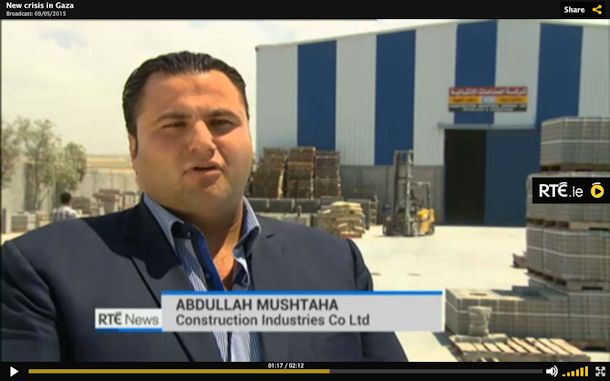
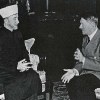
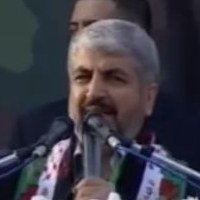
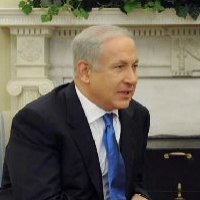
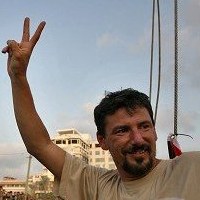












[…] article ‘An analysis of media and NGO narratives on present circumstances in Gaza’ provides an in-depth study of the many inaccuracies in Shortt’s reportage from […]